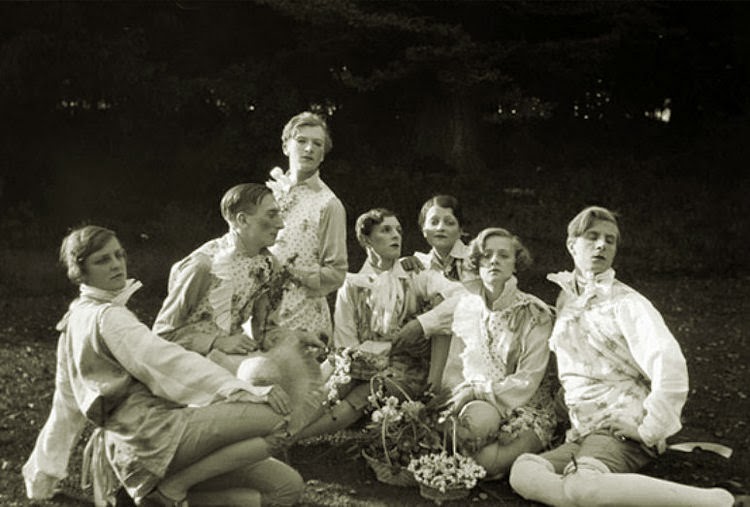"Lud" was one of the best known of the émigrée fashion models whose beauty graced the great fashion house of Paris in the 1920s and 1930s. Her story is told here - and far better than I could tell it - thanks to two friends of mine: Celebrated designer and collector Alexandre Vassiliev wrote about her in his truly remarkable, important book, "Beauty In Exile", which was published in 2000. This is an extract from the book review by Grant Hayter-Menzies, a respected and prolific author himself, whose writing - as it is here - is always both elegant and humane.
"Yet while Nathalie Paley [another celebrity model; daughter of Grand Duke Paul, who had been executed by the Bolsheviks in 1919], for all her finely chiseled beauty and romantic background, did not have the happiest of lives, nothing in her experience quite matches the roller coaster fortunes of Ludmila Feodoseyevna, known in the business as 'Lud'. And not even Nathalie Paley, that distillation of the striking elegance of her mother and what was most handsome from her imperial father's ancestry, could match what Lud had to offer. For one thing, Lud looked, and was, solidly Russian. She had the cheekbones, the lips at once frankly sensual and playfully amused, the slightly upward slanted eyes that hinted at something distantly, fantastically oriental. Those eyes (which grace the dust-jacket of Vassiliev's book) were her greatest feature, because they were different in every photo, from every angle the blue of ice one moment, the blue of warm bright gemstones the next, powerful proof of the Russian's proverbial variety of moods.
"Born in St Petersburg in 1913 to a vice-governor of Vladimir province, Lud escaped with her family to the Crimea after the Bolshevik revolution, thence to Constantinople, Greece and France. In exile, Lud proved to be more than just a pretty face. While her widowed mother struggled to make ends meet, Lud took high grades at a French lycée and planned to enter university to study philology.
"Fate determined a different course for Lud when the famed photographer Horst espied her delivering dresses to Vogue's Paris studio. Thus at age eighteen, Lud began what was to be a fabulous modeling career, first with the house of Countess Vera Borea, then Patou, then Chanel. She married a French marquis, and knew the delicious experience of having rivals Elsa Schiaparelli and Coco Chanel vie graspingly for her services. In 1937, wearing a draped white gown from Alix and posed like some lethally beautiful Medea between fluted columns, Lud was photographed by Horst in what Vassiliev describes as 'one of the immortal images of twentieth century fashion.'
"We all know beauty and wealth do not guarantee happiness, but the gods sought to use Lud to press the point home. First her marriage to the marquis failed; she married again, to a naval engineer, and began to appear in films. She left France for a time, living first in Argentina and later in the United States, and her second marriage broke up. By the time she returned to France in the early 50's and began working for Balenciaga, she sensed that somehow her sun had set. There were financial woes, brought on by her unflagging addiction to high living. She ended up taking a job at the Slenderella beauty institute, earning some cash on the side by singing in the chorus of the Paris Opéra. In 1959, the once glorious Lud was living in the resort town of Le Touquet, where the only work she could find was as an airport clerk. When that job ended, she found a new position, as head of curriculum at a private school, and when that job ended, Lud was hired as director of a home for aged Russians, where among the charges she oversaw was another faded Russian model, Princess Maria Eristova. Still, there was a little happiness for Lud at the end: in 1982, she married a childhood friend, Pierre de la Grandière, and lived with him in the French Alps until her death from cancer in 1990.
"In describing her mother, Lud's daughter also gives a fair account of most of the other artistic Russian émigrés. Lud feared nothing and no one, remembered her daughter, never hesitating to sail a boat out onto a stormy lake or take a stroll through a crime-ridden Paris purlieu. Lud was in love with living: 'She was the daughter of Epicurus.'"
The full book review is
available here.





+1838+sma.png)
+1840.png)
,+later+Princess+of+Schleswig-Holstein+1840.png)
+1857.png)
+1857+cu.png)




